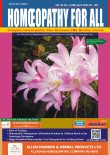Homoeopathic Management of Bilateral Renal Calculi with Hydroureteronephrosis, Fatty Liver, And Adenomyosis in a Postmenopausal Woman: A Case Report
Keywords:
Conventional treatmen, improvement, multisystem conditions, physiological changesAbstract
Introduction: Renal calculi, hydroureteronephro sis, fatty liver, and adenomyosis are common yet clinically challenging conditions, particularly when occur ring concurrently in postmenopausal women. Conventional treatment often involves surgical or pharma cological interventions. This case report highlights the role of indi vidualized homoeopathic manage ment in addressing this multisystem presentation.
Case Summary: A 50-year-old postmenopausal woman with bilateral renal calculi, hydroureteronephrosis, fatty liver, and adenomyosis presented with abdominal pain, pelvic heaviness, flank pain, and vertigo. Based on her totality of symptoms, Phosphorus was prescribed. Over two months, she showed marked clinical and radiological improvement. This case highlights the potential of individualized homoeopathic treatment in managing complex multisystem conditions.
Downloads
References
1. Prochaska M, Taylor EN, Curhan G. Menopause and risk of kidney stones. The Journal of urology. 2018 Oct 1;200(4):823- 8.
2. Kumar A, Goyal R, Garg K, Gupta S, Wilson K, Chopra H. Insights from a brief study of renal calculi: recent diagnostic and treatment approaches. Journal of Bio-X Research. 2024 Jun 3;7:0002.
3. Kramer HJ, Grodstein F, Stampfer MJ, Curhan GC. Menopause and postmenopausal hormone use and risk of incident kidney stones. Journal of the American Society of Nephrology. 2003 May 1;14(5):1272-7.
4. Iqbal S, Raiz I, Faiz I. Bilateral hydroureteronephrosis with a hypertrophied, trabeculated urinary bladder. The Malaysian journal of medical sciences: MJMS. 2017 Apr 14;24(2):106.
5. Brady CW. Liver disease in menopause. World Journal of Gastroenterology: WJG. 2015 Jul 7;21(25):7613.
6. Zhai J, Vannuccini S, Petraglia F, Giudice LC. Adenomyosis: mechanisms and pathogenesis. InSeminars in reproductive medicine 2020 May (Vol. 38, No. 02/03, pp. 129-143). Thieme Medical Publishers, Inc..
7. Vercellini P, Viganò P, Somigliana E, Daguati R, Abbiati A, Fedele L. Adenomyosis: epidemiological factors. Best practice & research Clinical obstetrics & gynaecology. 2006 Aug 1;20(4):465-77.
8. Herman PM, Crawford CC, Maglione MA, Newberry SJ, Amieux PS, Blyden-Taylor K, Khorsan R, Prenguber M, Rice E, Shollar A, Tyson T. The current state of the quality of homeopathic clinical research.
Complementary therapies in medicine. 2025 Mar 1;88:103108.
9. Sahoo AR, Patnaik M, Khamari N, Sahoo S. Chronic Cholelithiasis treated with Homoeopathic medicine in 50th millesimal potency: A case report. Indian J Res Homoeopathy 2020;14:57-63.
10. Teixeira MZ. Homeopathy: a preventive approach to medicine?. International Journal of High Dilution Research-ISSN 1982-6206. 2009;8(29):155-72.
11. Hahnemann S. Organon of Medicine. 6th ed. New Delhi: B. Jain Publishers; 2002.
12. Kent JT. Lectures on Homoeopathic Philosophy. New Delhi: B. Jain Publishers; 2004.




